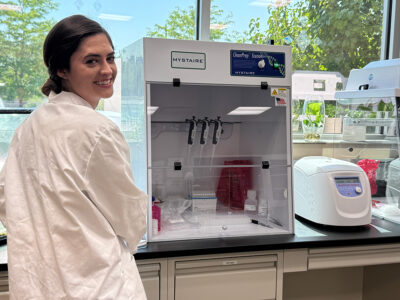
The Grand River Mosquito Control District now has its own in-house PCR (polymerase chain reaction) lab testing to improve the efficiency and accuracy of its mosquito-surveillance program.
PCR testing is a highly sensitive method of detecting the genetic material of a pathogen, and the Grand River Mosquito Control District is utilizing the testing to detect mosquito-borne viruses, such as West Nile Virus.
In-house testing allows the district to receive same-day results, which helps it react quicker and treat areas where mosquitoes have tested positive for West Nile Virus.
“PCR is the gold standard for detecting viral pathogens. We now will have results the same day so we can act immediately, if necessary,” District Manager Tim Moore said.
According to Grand River Mosquito Control District biologist Hannah Livesay, “The PCR process involves extracting genetic material from a sample, such as a mosquito pool, and amplifies it to detectable levels. The amplified material is then analyzed to determine the presence or absence of the target pathogen.”
The Grand River Mosquito Control District previously sent sampling from 15 traps to the state lab. Having the PCR testing in-house allows them to broaden sampling from across the valley.
“We now can test samples from 76 additional traps. This will give us more accurate data from a larger territory across the valley to monitor different species and diseases related to those species,” Moore said. “Having data from these additional traps will allow us to lean more on the science for activating appropriate treatment protocol.”
For more information on how to help the Grand River Mosquito Control District fight the bite, visit www.fightthebitegj.com.
